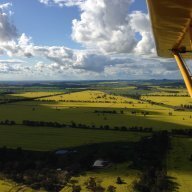-
Posts
1,032 -
Joined
-
Last visited
-
Days Won
13

Roundsounds replied to Phil Perry's topic in UK/Europe General Discussion

Roundsounds replied to kgwilson's topic in Aircraft Incidents and Accidents

Roundsounds replied to kgwilson's topic in Aircraft Incidents and Accidents

Roundsounds replied to HerpaDerp's topic in Governing Bodies

Roundsounds replied to Head in the clouds's topic in AUS/NZ General Discussion

